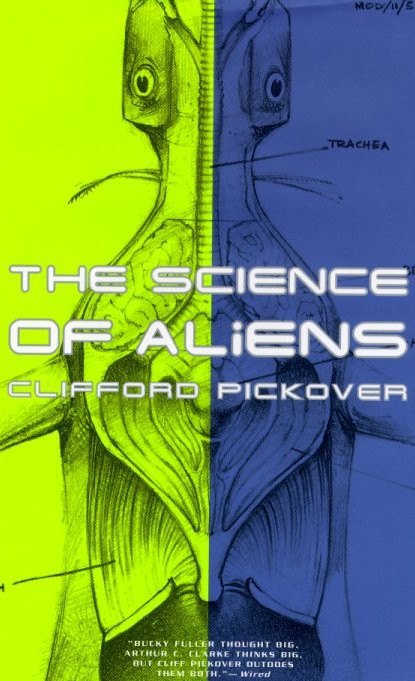

"To my utter astonishment I saw an airship descending over my cow lot. It was occupied by six of the strangest beings I ever saw. They were jabbering together, but we could not understand a word they said..." - Congressman Alexander Hamilton, 1897
"If we wish to understand the nature of the Universe we have an inner hidden advantage: we are ourselves little portions of the universe and so carry the answer within us."
- Jacques Boivin, The Single Heart Field Theory
"Astronomy compels the soul to look upwards and lead us from this world to another."
- Plato (427-347 B.C.) The Republic, Book VII
My interest was further stimulated in the late 1960s by the TV series Lost in Space which dealt with the travels of a human family exploring strange planets. Their mission, set in the not-too-distant future, was to begin colonization of a planet near the star Alpha Centauri. Unfortunately, their craft went off course, and they lost all contact with Earth.
The most memorable Lost in Space episode dealt with an intergalactic zoo. When the animals accidentally escape, an odd assortment of 2-legged, hairy, bug-eyed monsters came ambling, running, leaping, and shuffling from the zoo enclosure. It hardly occurred to me to ask myself what would it really be like to visit an intergalactic zoo. Would the creatures look like the ones on the TV show?
What if you could visit an intergalactic zoo filled with intelligent lifeforms? Would the aliens have heads, arms, and legs, or even be vaguely humanoid? The challenging task of imagining aliens from other worlds is useful for any species that dreams of understanding its place in the universe.
Are humans alone in the universe? This question is one of the oldest questions posed by philosophers and scientists, and it and has profound implications for our world view. For the first time in history, questions about extraterrestrial life have left the realm of theology and science fiction and entered the real of experimental science. Recent advances in biochemistry and molecular biology suggest that life -- even life on Earth -- can exist in incredibly diverse and bizarre environments. Recent discoveries of life living miles under the Earth in utter darkness, or in ice, or even in boiling water, tell us: that which is possible in nature tends to become realized. My personal view is that almost everything happens in our universe that is not forbidden by the laws of physics and chemistry. Life on Earth can thrive in unimaginably harsh conditions, even in acid or within solid rock. On the ocean floor, bacteria thrive in scalding, mineral-laden hot springs. If microbes thrive in such miserable conditions on Earth, where else beyond Earth might similar life forms exist?
As we increasingly understand the origin of life and the
chemical composition of our solar system's planets and moons, we learn
that life on other worlds is quite likely, and we will someday discover
it in a myriad forms. Compelling evidence of a subsurface ocean on Jupiter's
moon Europa has also fueled speculation that life can exist on other worlds.
Moreover, the wonderful and extremely weird creatures that inhabit our
own world suggests that God loves the bizarre. When I gaze upon
crazy-looking crustaceans; squishy-tentacled jellyfish; grotesque, hermaphroditic
worms; and
Basidiomycetes fungi more alien than the wildest dreams
of science fiction writers, I know that God has a sense of humor, and we
will see this reflected in other forms in the Universe.
There are many excellent books on the possibility of extraterrestrial life, and these are listed in the "For Further Reading" section at the end of this book. So, why another book on alien life? I have found that previous books on the subject have a particular shortcoming. They don't focus wholeheartedly on the physical appearance, philosophy, and evolution of aliens while also discussing leading-edge biological research on Earthly life.
Hopefully, my army of illustrators will also stimulate your imagination in ways that mere words cannot. Imagery is at the heart of much of the work described in this book. To better understand and contemplate alien life, we need our eyes. Artists from different backgrounds produce visual representations from myriad perspectives. For many of you, seeing hypothetical aliens will clarify concepts in ways mere words cannot.
Why contemplate the appearance of aliens? Scientists and artists feel the excitement of the creative process when they leave the bonds of the known to venture far into unexplored territory lying beyond the prison of the obvious. When we envision the physical structures of alien bodies and their hypothetical cultures, we are at the same time holding a mirror to ourselves, revealing our own prejudices and preconceived notions. Aliens appeal to young minds, and I know of no better way to stimulate students than to muse about the science of aliens. Creative minds love roaming freely through alien biology, psychology, and astronomy.
As in all my previous books, you are encouraged to pick and choose from the smorgasbord of topics. Feel free to skip chapters in favor of those topics of most interest to you. A few morsels of information are repeated so that each chapter contains sufficient background information. In fact, there is nothing to stop you from reading this book from back to front. Many of the chapters are brief to give you just the tasty flavor of a topic. Those of you interested in pursuing specific topics can find additional information in the referenced publications. In order to encourage your involvement, the book is loaded with numerous what-if questions for further thought. Spread the spirit of this book by posing these questions to your students, to your buddies at the next stockholder's meeting, to your family the next time you plunk down on the couch to watch Star Wars...\
See Pickover books at Amazon.Com in separate window.
Click
here for reviews of this book.